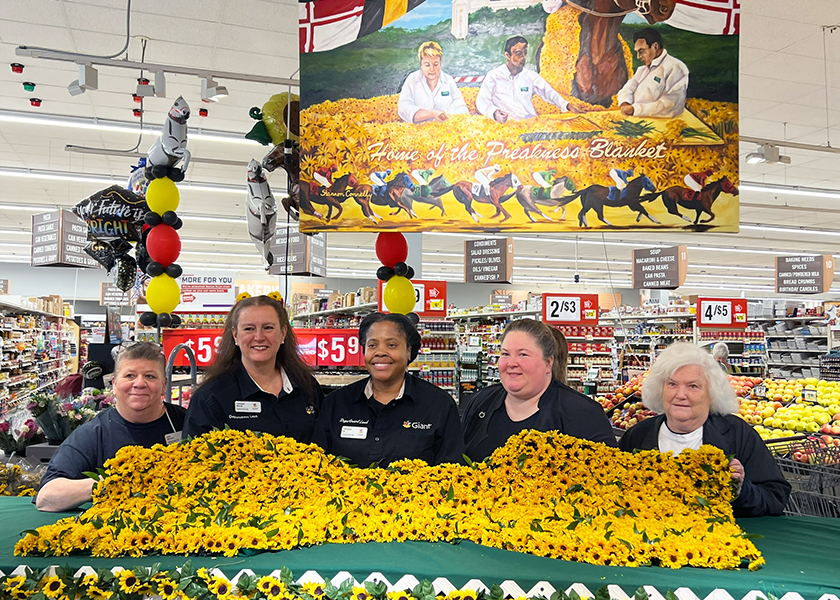Giant Food florists weave Preakness Stakes winner horse blankets

When Kathleen Marvel took a job as a supermarket florist, she didn’t expect her creations would be seen on TV by millions worldwide.
But then Marvel was transferred to Giant Food’s Baltimore store location closest to the Preakness Stakes, the American thoroughbred horse race held annually at Pimlico Race Course, and near the Black-Eyed Susan horse race leading up to it. The Preakness Stakes is one of the Triple Crown of races a horse can win in one season, along with the Belmont Stakes and the Kentucky Derby.
Florists at that Giant Food store create the floral blankets that adorn the winning horses, photographed and televised in the winning circle.
And that’s when Marvel’s job became a bit higher profile.
“My family and I watch it every year. I still get goose bumps every time. I feel like I've touched a piece of history,” she said.
Marvel and three other florists work together for eight hours to make one blanket.
The florists who worked on both race blankets include Mary Pat, Joann Heil, Jennifer Gobble, Veronica Worsley, Kim Greenblatt, Gina Balzano, Kathleen Whaley Marvel and Patricia Dryer.
First, they cut the flowers, then fasten a wire to the stem before weaving each flower to the matting. They do this painstaking process “over and over and over” until the matting is filled, before sewing felt onto the back of the matting, Marvel said.
Giant Food florists have been weaving these winning blankets for more than 26 years, incorporating more than 6,000 flowers hand-stitched by a team of in-store florists.
They work on the open floor of the store where shoppers can see.
“We get lot of repeat visitors and picture-takers,” Marvel said. “Also, many people are first-timers and can't believe we make it.”
During the two days the florists worked on the blankets for the last Preakness Stakes on May 20, the local press came to cover it, said John Dunkin, Giant Food’s floral category manager.
“It creates, honestly, an awesome environment to see and a rapport with the customers,” Dunkin said. “It’s really a neat experience to watch how they do it, how they work together as a team; it’s 4-feet-by-6 or 7 feet. They hand-cut each stem to size. It’s really meticulous handwork that goes into it, and seeing the customers come in, being part of it, watching and the who kids come up — it’s really neat.”
Giant Food sources the flowers from Gems Group, which uses a nearby farm in Virginia. They can’t use black-eyed susan flowers, the Maryland state flower, because of the timing of the race doesn’t match its growing season, so they use viking mums, which look similar.
This race is important to the community, and for Giant’s florists to participate in such a way shows how the supermarket is part of the community fabric as well.
“It's great for us to be involved in the community and to let everyone know that Giant can take care of all your floral needs,” Marvel said.
Did you know?
The Black-Eyed Susan Stakes takes its name from the Maryland state flower. The Preakness Stakes is named after the horse that won the Dinner Party Stakes at the track in its opening year, 1870. The Minisi, a northern New Jersey tribe of Native Americans, used to call their area “Pra-qua-les,” which meant “quail wood,” according to "13 fun facts about the Preakness Stakes” on WBAL-TV 11. After a series of spellings, the name eventually evolved into Preakness. A thoroughbred owner liked the word and named his New Jersey and Kentucky farms “Preakness.”







